Using matplotlib.pyplot, I have two plots. One is a waveform of an audio file. The second is a spectrogram of the same audio. I want the wave form to be directly above the spectrogram (same x-axis, and aligned together). I also want a colorbar for the spectrogram.
Problem - when I put the colorbar in, it attaches to the spectrogram row and the waveform extends over the colorbar (i.e. is no longer time-aligned with the spectrogram and is wider than the spectrogram).
I am close to the solution, I think, but I just can't quite figure out what I'm doing wrong or what to change to get it working the way I want. Hope someone can point me in the right direction!
Using the following python code (I made the code as MWE as possible):
import matplotlib
matplotlib.use("TkAgg")
from scipy.io import wavfile
from matplotlib import mlab
from matplotlib import pyplot as plt
import numpy as np
from numpy.lib import stride_tricks
samplerate, data = wavfile.read('FILENAME.wav')
times = np.arange(len(data))/float(samplerate)
plt.close("all")
####
#Waveform
####
fig, axes = plt.subplots(nrows=2, ncols=2, figsize=(13.6, 7.68))
plt.subplot(211)
plt.plot(times, data, color='k')
plt.xlabel('time (s)')
plt.xlim(times[0], times[-1])
max_amp = max(abs(np.amin(data)), abs(np.amax(data)))
min_amp = (max_amp * -1) - abs(np.amin(data) - np.amax(data))/50
max_amp = max_amp + abs(np.amin(data) - np.amax(data))/50
plt.ylim(min_amp, max_amp)
ax = plt.gca()
ax.set_yticks(np.array([min_amp, min_amp/2, 0, max_amp/2, max_amp]))
ax.spines['bottom'].set_position('center')
ax.spines['right'].set_color('none')
ax.spines['top'].set_color('none')
ax.xaxis.set_ticks_position('none')
ax.yaxis.set_ticks_position('none')
ax.xaxis.set_tick_params(pad=115)
####
#Spectrogram
####
Fs = 5000*2.#10000.
NFFT = min(512, len(data))
noverlap = NFFT / 2
pad_to = NFFT * 16
dynamicRange = 27.5
vmin = 20*np.log10(np.max(data)) - dynamicRange
cmap = plt.get_cmap('inferno')
plt.subplot(212)
Pxx, freqs, times, cax = plt.specgram(data, NFFT=NFFT, Fs=samplerate, noverlap=noverlap, mode='magnitude', scale='dB', vmin=vmin, pad_to=pad_to, cmap=cmap)
axes_spec = plt.gca()
axes_spec.set_xlim([0., max(times)])
axes_spec.set_ylim([0, 5000])
plt.xlabel("Time (s)")
plt.ylabel("Frequency (hz)")
plt.colorbar(cax, label='(dB)').ax.yaxis.set_label_position('left')
plt.tight_layout()
plt.show()
I can get the following plot:

Making these slight modifications below, I can get the plot to look almost how I want. The problem is, it creates a blank figure next to the colorbar. This version, minus the blank figure, is what I am trying to create.
#Replace this for waveform
plt.subplot(221)
#Replace this for spectrogram
plt.subplot(223)
#Add this before colorbar
plt.subplot(122)
New version of plot:

EDIT: There is another possibility that I am also OK with (or perhaps both, for good measure!)






